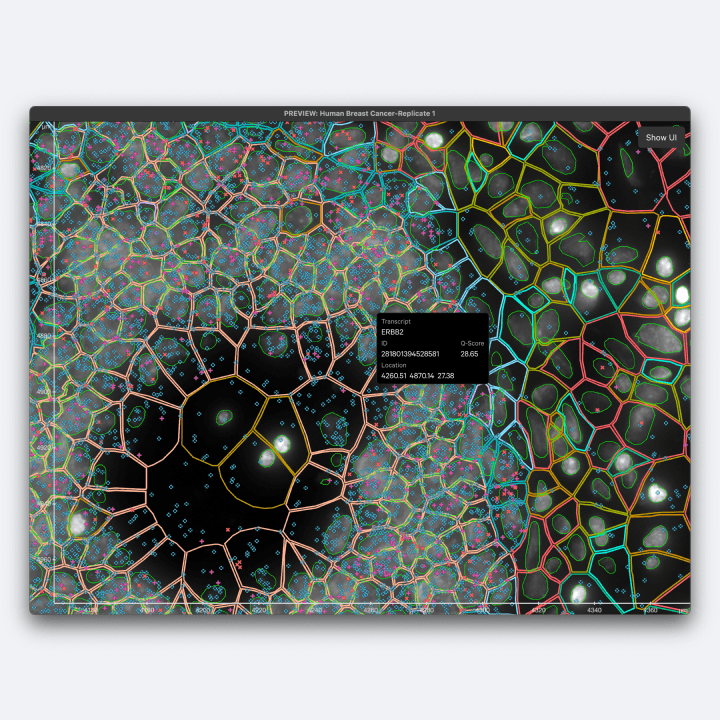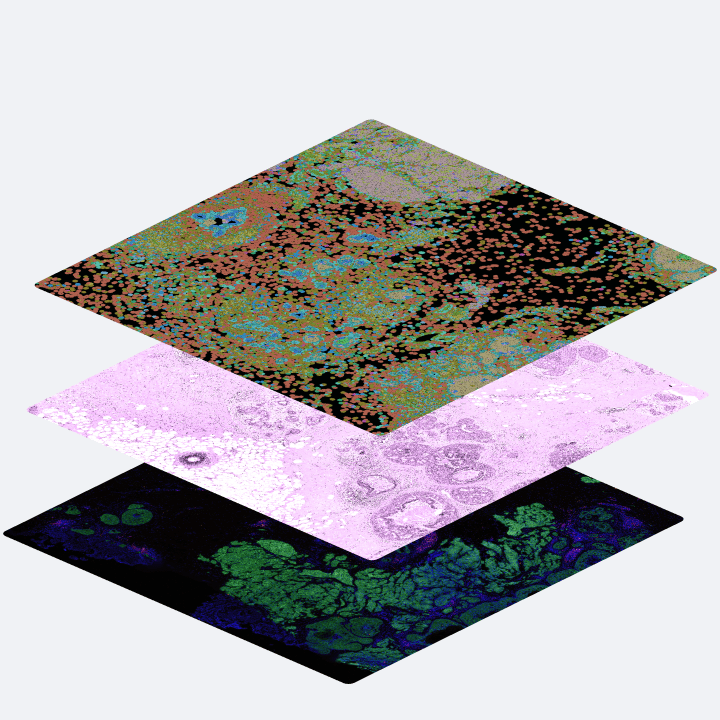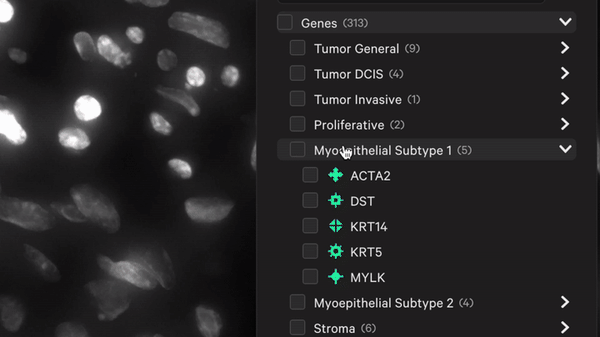Characterize 100s to 1,000s of RNAs and multiplexed protein in cells and tissues with subcellular in situ resolution in the same section.
Xenium builds on our years of innovation in singe cell and spatial technologies to deliver the most advanced end-to-end high-plex in situ platform on the market. The purpose-built design streamlines going from tissue section to data, with an automated analyzer, curated and/or custom panels, and intuitive visualization and analysis software.
Highly sensitive and specific padlock probe chemistry
Have confidence in your data. Take advantage of unique capabilities like distinguishing between highly homologous or short RNAs and detecting lowly expressed transcripts.
Industry-leading throughput with up to 6 slides per week
Maximize your biological insights and avoid scanning area limitations. Analyze up to 288 mm² per slide for a total of up to 1,728 mm² per week.
Visualize and explore data immediately after a run
The Xenium Analyzer processes data during the run and no cloud is required. Leverage our open common file formats with the community-developed tools of your choosing.
Expertly curated and customizable assays
Choose from biologically relevant panels that leverage our extensive experience in the single cell field. Easily customize off-the-shelf panels, or have us build a standalone panel for your targets of interest.
Fast, 3-hour hands-on workflow, and guided instrument run setup
Get your experiments started quickly. No tissue optimization is required, with similar protocols for FF and FFPE samples.
Integrate histopathology workflows with high-plex in situ data
Run H&E and protein (IF) on the same section. Xenium’s non-destructive assay makes for seamless incorporation into histopathology studies post-run.
Immediate access to insights with powerful and intuitive software
- Comprehensive on-instrument analysis, including cell segmentation and clustering
- Off-instrument visualization using the interpretation-ready outputs generated by Xenium Analyzer
Easily find biology that matters
Group genes by marker type to identify cell types and states with Xenium's revolutionary subcellular resolution.
Fully explore transcript density at any scale
Zoom in to single molecules in single cells, or zoom out to whole tissue maps.
Seamlessly compare gene expression across tissue regions
Explore how context influences data across the entirety of your tissue section. Use the lasso tool to easily compare gene expression across tissue regions.
Freely analyze data how you choose
Delve into your data with the intuitive Xenium Explorer or plug directly into third-party tools without the hassle of modifying file formats.
- Analyze up to 6 slides per week or the equivalent of 1,728 mm² of tissue.
- Flexible tissue compatibility. Work with fresh frozen or FFPE samples.
- Xenium Analyzer simultaneously collects and processes data. The data is ready for you to analyze directly after a run completes.

Target the biology that matters
Our panels are carefully designed and curated, incorporating a data-driven approach that combines expert input with years of single cell experience. Customization is fast and easy, letting you add to existing panels or order your own standalone panels specifically tailored to power your research.
Human Breast Gene Expression Panel
Features 280 genes chosen to target cell types and cell states, including cancer disease states.
Add up to 100 additional targets.
Mouse Brain Gene Expression Panel
Features 248 genes chosen to target cell types and cell states for mouse brain research.
Add up to 100 additional targets.
Standalone Custom Panels
Give us a list of up to 300 targets, and we'll design, build, and ship the panel in 4-6 weeks.
Coming mid-2023: Human Brain Gene Expression Panel
Add up to 100 additional targets
Coming mid-2023: Human Lung Gene Expression Panel
Add up to 100 additional targets.
Additional panels in development
Xenium is even more powerful when complemented with the 10x toolkit
Expand your Xenium insights by combining them with unbiased, whole transcriptome measurements from single cells and entire tissue sections. Seamlessly move back and forth between multiomic single cell, spatial, and/or subcellular resolution.

Chromium Single Cell
Perform transcriptomic profiling, with multiomic capabilities, in up to a million single cells. Characterize tissue heterogeneity, discover rare cell types, and dissect molecular mechanisms cell by cell.
Visium Spatial
Assess spatial gene expression of FFPE or fresh frozen tissue sections. Harness whole transcriptome discovery while defining the relationship between cellular function and location.

